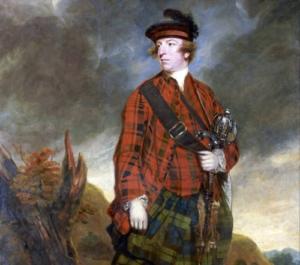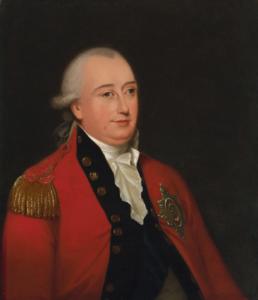Alan Taylor’s “The Internal Enemy: Slavery and War in Virginia, 1772-1832” addresses the complex subject of slavery in a state dedicated to liberty while still enslaving two-fifths of the population. In 1775 the last royal governor, Lord Earl Dunmore, freed the slaves provided they would fight for the British. While the majority of the Taylor book looks to the War of 1812, the following excerpt sets Lord Dunmore’s 1775 proclamation as the precedent to British actions nearly 40 years later.
“Virginians anticipated an invasion by British troops to enforce imperial control by recruiting slaves with the promise of freedom. In late 1774, James Madison reported the discovery of a slave plot to welcome and assist British troops. In June 1775 Madison warned a friend to beware of British efforts to foment a slave revolt.
 “Lord Dunmore knew that secret of the internal enemy. Initially he balked at arming and emancipating the slaves because they were essential to Virginia’s economy. Dunmore hoped to intimidate the planters by merely threatening to arm and emancipate. His bluster became ominous on April 21, 1775, when his troops seized the public gunpowder supply in Williamsburg for removal to a British warship. Without that gunpowder, the planters feared they would lack the firepower to suppress a slave revolt, which rumors insisted was imminent. Galvanized by the seizure, Piedmont Patriots led by Patrick Henry took up arms and marched on Williamsburg to confront the governor, who escaped their wrath by fleeing to a British warship.
“Lord Dunmore knew that secret of the internal enemy. Initially he balked at arming and emancipating the slaves because they were essential to Virginia’s economy. Dunmore hoped to intimidate the planters by merely threatening to arm and emancipate. His bluster became ominous on April 21, 1775, when his troops seized the public gunpowder supply in Williamsburg for removal to a British warship. Without that gunpowder, the planters feared they would lack the firepower to suppress a slave revolt, which rumors insisted was imminent. Galvanized by the seizure, Piedmont Patriots led by Patrick Henry took up arms and marched on Williamsburg to confront the governor, who escaped their wrath by fleeing to a British warship.
“By calling Dunmore’s bluff, the Patriot coup in Williamsburg forced him to convert his bluster into black soldiers. In early November 1775, his proclamation offered freedom to slaves and indentured servants who would help him suppress the Patriot rebellion. Rather than a blanket offer of emancipation to all, he promised freedom only to young men who would bear arms against the rebels. Instead of intimidating the Virginians into submission, his Proclamation united almost all of the shocked whites as Patriots determined to win independence from British rule.
“By early 1776, about 800 enslaved men, and an equal number of women and children, flocked to Dunmore’s encampments and ships. If Dunmore wanted men as soldiers, he also had to receive their families, although feeding and sheltering them all strained his resources. Dunmore organized the men into a special unit, the ‘Ethiopian Regiment,’ commanded by white officers.
 “In Virginia, most of the runaways came from the Tidewater counties closest to Dunmore’s ships and bases in the lower reaches of Chesapeake Bay. They escaped from riverside farms and plantations in canoes and boats stolen from their masters. On the upper Potomac River, far to the north of Dunmore’s ships, George Washington’s farm manager reported that among the slaves ‘there is not a man of them, but would leave us, if they believ’d they coud make their escape.’
“In Virginia, most of the runaways came from the Tidewater counties closest to Dunmore’s ships and bases in the lower reaches of Chesapeake Bay. They escaped from riverside farms and plantations in canoes and boats stolen from their masters. On the upper Potomac River, far to the north of Dunmore’s ships, George Washington’s farm manager reported that among the slaves ‘there is not a man of them, but would leave us, if they believ’d they coud make their escape.’
“To discourage escapes, Virginians made examples of some captured runaways by giving them brutal public floggings, often accompanied by lopping off an ear. The authorities also hanged runaways caught bearing arms for the enemy. Their severed and rotting heads sat atop posts placed at crossroads as a warning to passing slaves.
“Dunmore’s military ineptitude soon undermined his credibility as a liberator. In December 1775, just a month after issuing his proclamation, he rushed his raw recruits into a premature battle. Attacking the Patriot militia posted south of Norfolk at Great Bridge, Dunmore’s men suffered a crushing defeat. In a panic, Dunmore fled to his ships, evacuating Norfolk. He set up a new base on Gwynn Island at the mouth of the Piankatank River, where most of his refugees succumbed to an epidemic of smallpox, for Dunmore had neglected to inoculate his recruits.
 “Abandoning his botched campaign in August 1776, he sailed away to the British headquarters at New York City, recently captured from the Patriots. He withdrew about 500 blacks, leaving behind another 1,000 who were dead or dying. Their fate provided great fodder for Patriot propaganda, which cast the British as duplicitous seducers of foolish slaves.”
“Abandoning his botched campaign in August 1776, he sailed away to the British headquarters at New York City, recently captured from the Patriots. He withdrew about 500 blacks, leaving behind another 1,000 who were dead or dying. Their fate provided great fodder for Patriot propaganda, which cast the British as duplicitous seducers of foolish slaves.”
At Yorktown in 1781, Lord Earl Cornwallis pushed out numerous ex-slaves on the pretense the British under siege could no longer feed them. First, he had them infected with smallpox to infect the Allies. George Washington’s stepson Jackie Custis discovered two young women in no man’s land who had been taken from Mt. Vernon in a British raid. Days later he lay dying of smallpox.
–Condensed from a news release by the Museum of the American Revolution, opening next year in Philadelphia.
Let’s Go Sail
Check rates and pick a day for a sailboat charter. See reviews on Trip Advisor from sailors like you.



